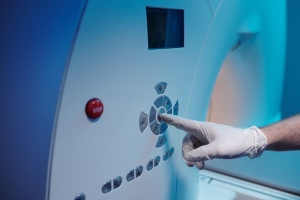From the November 2021 issue of HealthCare Business News magazine
The year in MR news saw continued expansion in many directions. New heavy-duty scanners with cutting edge capabilities, as well as smaller and more portable systems to bring MR into areas it has never gone before. Here, in chronological order, are the ten biggest MR stories of the year from our Daily News online.
Hyperfine raises $90 million in Series D funding for Swoop portable MR platform
In February, Hyperfine Research racked up $90 million in an oversubscribed Series D financing round that would go toward the commercialization of its Swoop portable MR imaging platform.



Ad Statistics
Times Displayed: 129813
Times Visited: 7378 MIT labs, experts in Multi-Vendor component level repair of: MRI Coils, RF amplifiers, Gradient Amplifiers Contrast Media Injectors. System repairs, sub-assembly repairs, component level repairs, refurbish/calibrate. info@mitlabsusa.com/+1 (305) 470-8013
Swoop boasts wheels that can transport it to a patient’s bedside, where it can be plugged in and controlled with an Apple iPad to image the internal structure of the head and produce scans in minutes.
“We refuse to accept barriers to accessible, equitable care, and we intend to make the previously impossible both possible and affordable by delivering MR imaging to the patient, wherever that patient is,” said Hyperfine founder Dr. Jonathan Rothberg in a statement at the time.
The $90 million will help enhance U.S. commercialization efforts for the platform as well as support the company’s plans to launch it in multiple countries.
It will also be used to further progress new regulatory clearances, fast-track continued AI and deep learning developments for imaging accessibility, and help Hyperfine work with physicians to identify new use cases.
The Swoop portable MR platform scored FDA clearance in 2020 and is meant to be a complementary system to traditional, fixed MRs, which are inaccessible to patients who are difficult to transport to the MR suite. Coordinating transport often leads to four-to-six-hour backlogs, which hinders the use of MR, especially in time-sensitive settings like the ICU and ER.
The solution is also available at a fraction of the cost of traditional MR scanners and is currently being assessed in a global research program for its ability to identify and potentially reduce labor- and delivery-related brain damage that causes HIE (hypoxic ischemic encephalopathy) in infants in low-resource countries. The program is supported by a $1.6 million grant from the Bill and Melinda Gates Foundation.
Global MR imaging market expected to rack up $4.5 billion by 2024
The global MR imaging market is poised to take home $4.52 billion in revenue in 2024, according to a Frost & Sullivan report released in March.
Point-of-care, pediatric, dry-magnet and compact MR are among the technologies and indications driving growth, along with fusion imaging and an expected increase in sales of portable MR. Growing public-private partnerships and an increase in near-replacement time in public domains are also expected to increase MR system installations.

